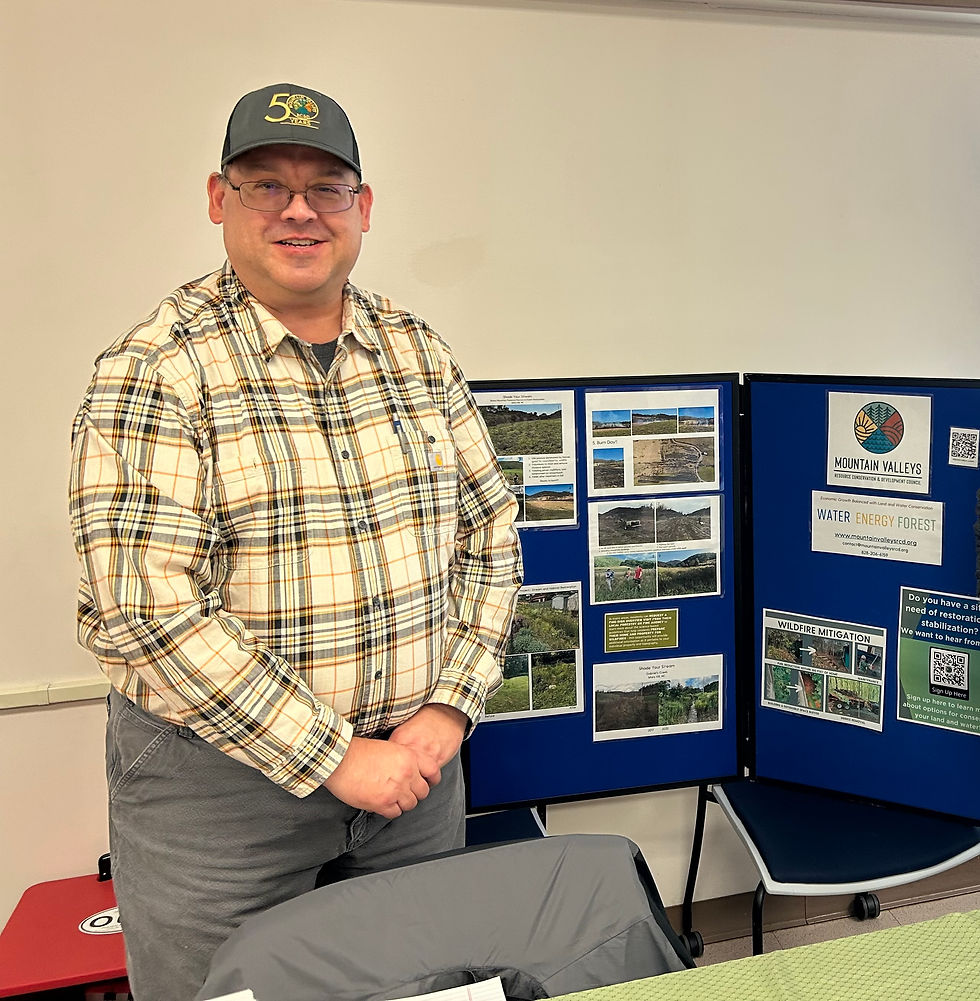Wildfire Mitigation: Learn about Defensible Space
- Sarah Noah
- Sep 16
- 2 min read

Mountain Valleys RC&D has had a very active summer schedule introducing the Firewise-USA program to five communities through presentations and completing forty-seven individual home assessments. Working in cooperation and guidance of the North Carolina Forest Service, Mountain Valleys RC&D assists communities in reducing their risk of home and property loss due to wildfire.
With fall almost upon us, there is no better time to be thinking of how to reduce the wildfire risk to your home and property.
One way to make your home safer is to remember the Three Home Ignition Zones
1. Immediate Zone (0–5 feet from the house) Most homes that ignite during a wildfire are set on fire by windblown embers, which is why this zone is the most important.
What to do:
Use non-combustible materials like gravel, concrete, or pavers for hardscaping.
Remove trees and shrubs from this area and replace them with succulents.
Clear all dead plants, leaves, and debris from roofs, gutters, decks, and outdoor areas.
Move combustible items like firewood, patio furniture, and recycling bins out of this zone.
Replace or repair loose shingles and ensure attic and exterior vents have 1/8-inch metal mesh screens to block embers.
2. Intermediate Zone (5–30 feet from the house) This is where vegetation management creates a buffer to reduce fire intensity.
What to do:
Remove all dead plants, grass, and weeds.
Remove all tree branches at least 6 feet from the ground to prevent fire from climbing, a process known as "ladder fuels".
Mow annual grasses to a maximum height of 4 inches.
Ensure outbuildings and propane tanks are clear of brush and combustible materials
3. Extended Zone (30–100 feet from the house) The goal in this outermost zone is to slow a wildfire's spread and reduce its energy.
What to do:
Space out remaining trees and shrubs. Distances depend on the slope of your property, with greater space needed on steeper slopes.
Remove heavy accumulations of ground litter and dead plant material.
This is a good area to maintain irrigated "green belts" or use fire-resistant vegetation.
Ongoing maintenance is key.
Click on the following link for Fire Resistant Landscaping-NC published by The North Carolina Forest Service.
Defensible space is not a one-time project. It requires consistent upkeep, especially before fire season. Regularly remove dead vegetation, prune branches, and clear debris from your property. A defensible space that is not maintained can quickly lose its fire-resistant properties.
Additional information can be found at: https://www.ncagr.gov/divisions/nc-forest-service/resist-wildfire-north-carolina or https://www.mountainvalleysrcd.org/forest






Comments